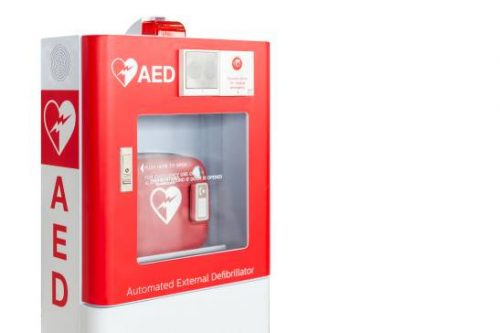Cardiac arrest is a condition in which the heart stops beating. When the heart stops beating, there is no blood flow to the rest of the body and without intervention it can be deadly.
Cardiac arrest is caused by a problem with the heart’s electrical system. This can be caused by a heart attack, abnormal heart rhythms (arrhythmias), or heart failure.
Symptoms of cardiac arrest can include chest pain, shortness of breath, and fainting.
| AED | Defibrillator |
| An automatic type of defibrillator. | Consists of different types of defibrillator. |
| Can exam different defibrillation needs. | Usually different types are built for different types of need in defibrillation. |
| More affordable. | Types other than AEDs are generally more expensive. |
| Portable. | Most types are not portable. |
| Training is not required. | Most types need training before can be used. |
| Easy to use. | Can be automatic, semi-automatic, or manual, depending on the type. |

There are some tools that can help the heart to start beating again. One of the tools is called defibrillator. Defibrillator consists of several different types, such as manual or AED (Automated External Defibrillator).
In this article, we will compare the AED and defibrillator in general.
Defibrillator is a medical device that delivers an electric shock to the heart. The electric shock helps to correct an irregular heartbeat and return the heart to a normal rhythm. While AEDs are the latest type of defibrillator.
As one of the newest type of defibrillator, AEDs are very user-friendly. They are so easy to use and most of them come with voice commands that will walk you through the entire process.
AEDs are also very portable. They are small and lightweight and can easily be carried in a backpack or a small bag. AEDs are also relatively affordable. They can be purchased at the price from $1,400 to $4,000 when other types of defibrillators can cost more than $25,000.
Conventional defibrillators are not as user-friendly as AEDs. They require a fair amount of training in order to be able to use them correctly. They are also not as portable as AEDs since they are larger and heavier and are not as easy to carry around.
Doctors and emergency responders often use conventional defibrillators in emergency rooms. They are not as easy to use as AEDs, but they have more advantages in that conventional defibrillators can assess the need of a specific type of medical condition.
Despite that, AEDs are becoming more and more popular. Since they are easy to use, portable, and affordable, AEDs can be a great option for people who want to have a basic level of protection against cardiac arrest.
AEDs are a much safer option for people who are not trained in CPR and first aid.





